Mint Alternatives can help you track your finances in one place. Mint is one of the oldest and biggest online personal finance tracking apps. Founded in 2006, Mint made waves in the personal finance software world thanks to its powerful interface and ability to add transactions from thousands of financial institutions.
The company was acquired in 2009, and since then many users believe the site’s functionality and support have gone downhill, sending them looking for Mint alternatives. If you want an alternative to Mint.com, here is a list of options that I, Eric Rosenberg, have tried and think could be valuable for you. Whether you have a full-time day job, are building your side hustle, or are self-employed, finding resources to help you track spending can be a great early step toward personal profitability.
About Mint.com
Mint is the original and most popular online account-tracking software. For no charge, you can link all of your bank, credit, loan, and investment accounts into one interface. The site helps you automatically track your budgets, financial goals, and all of your transactions through one login and an intuitive interface.
The site was acquired by personal finance powerhouse Intuit in 2009, and the site has undergone many changes. While some new features like credit score reporting have been added, long-time features have slipped and the switch from an outsourced account data system to the in-house system built for Quicken have caused data errors and headaches for a lot of people who are now in search of Mint alternatives. Mint.com is free.
Mint Alternatives Summary
| Recommended Mint Alternatives | Features/Best For |
|---|---|
| Empower (formerly Personal Capital) – Featured Mint Alternative | Best Overall |
| Lunch Money – Featured Mint Alternative | Money and tech-savvy |
| Power Wallet | Bill Reminders and insights |
| Quicken | Traditional desktop tracker |
| You Need a Budget | Tracking every dollar |
| Yodlee Money Center | Tracking everything |
| Learnvest | Financial advising |
Best Mint Alternative: Empower
This site has been a great tool in my personal finance arsenal and is my go-to resource for tracking my investments across all of my investment accounts. I track my individual stock holdings, Roth IRA, Rollover IRA, special investment accounts, and employer 401(k) account through Empower, and it has been useful and really helped me save money.
I used the investment analysis tools at Empower to bring my portfolio in line with my goals and save over $300 per year on mutual fund fees. If you have $100,000 or more in cash and investments, you will also qualify for a free investment consulting session with an Empower advisor. Empower’s financial tools are free regardless, but if you opt for financial advising on managing your investments, there is a fee based on your portfolio size.
Detailed Comparison: Mint Alternative: Empower »
Lunch Money

Lunch Money is a newer app from a solo developer. She has done an awesome job building a tool for those who are doing well with their money and want better financial planning skills. It isn’t quite as robust as Mint, but everything I tried worked flawlessly with Lunch Money, which I can’t say about the larger competitor. The site has an active roadmap with new features added regularly. To learn more about Lunch Money you can check out the podcast interview with its founder on Indie Hackers.
Lunch Money helps you categorize your budget and track cash flow. It works well for both the United States and international users in foreign currencies. It also supports tracking cryptocurrency accounts and wallets, something most competitors have yet to touch. I’ve been using it myself for a little bit, and have been very impressed. The biggest downside is that it isn’t free. It costs $10 per month or $100 per year, but there are no advertisements and your information is never sold. Some may call that a small cost for better privacy.
Power Wallet

Power Wallet aggregates your finances in one view, and helps you track all of your financial account data in one central place. The site has a big focus on adding budgets by spending category and tracking your spending habits against your budget automatically.
Power Wallet also offers bill reminders to help you avoid missing bills and paying those pesky late charges. The insights from this site are geared toward helping you meet your own personal finance goals. Power Wallet is free.
Quicken
Quicken is a long-time leader in desktop-based financial tracking. Quicken offers most of what you get for free at Mint.com, but in desktop form, with software you download and install on your computer.
Because the program is desktop based, the web and mobile access lack compared to Mint, but the software allows you to own and control all of your data on your own PC. More expensive versions also include tracking for small businesses, rental real estate, and investments. Quicken is paid software.
YNAB
You Need a Budget, known by its loyal army of users as YNAB, is a desktop and mobile based budgeting software with a major difference from everything else on this list: it does not automatically link to your checking account or credit cards.
YNAB founder Jesse Mecham believes that manually adding each transaction creates the best money management habits, and automatic tracking does not form any habits. When you make a purchase with cash, debit, or credit, you enter the purchase into your budget and get an update right away. This is proactive budgeting, not retroactive reacting.
YNAB is software that you purchase and download. Version 4.0 is currently available for $60, or you can sign up for the free trial.
Yodlee MoneyCenter

Yodlee was the original data aggregation provider for Mint.com, and while that site switched over to the Intuit engine, Yodlee is still a top provider of account aggregation for some of the sites in this list.
Yodlee MoneyCenter is their in-house personal finance tracking tool, and it is powerful and useful in its own right. The tools provided in MoneyCenter are focused on tracking account balances and transactions, reaching finance goals, and achieving more financial freedom.
Yodlee MoneyCenter tracks spending in categories, and allows you to track your airline miles, your net worth, and understand your investment asset allocation. Yodlee MoneyCenter is free.
LearnVest

LearnVest is the account tracking program created by actual personal finance advisors, so the tools are focused on how you interact with your money and the psychology behind personal finance management.
Rather than honing in on small budget categories, LearnVest breaks your money down into income, fixed expenses, goals, and flex spending money for you to do what you want. They have a major focus on getting debt free as well. The software is free, but a paid experience is available where you are assigned a personal financial advisor to give you extra help.
Mint Alternatives Graveyard
Clarity Money

Clarity Money was a simple personal finance and budget tracker that was merged into Marcus by Goldman Sachs, a consumer bank, in March 2021 under the name Marcus Insights. This app doesn’t offer the deep budgeting or investment tools of Mint and Empower. Instead, it focuses on giving you your current account details in an easy-to-understand view with details on the most recent transactions. In either case, if you want a simple snapshot of all of your money, this feature delivers. But an account with Marcus by Goldman Sachs is required.
Adaptu
Adaptu was a site with a focus on connecting your personal finance tracking with community support. Adaptu was one of the first personal finance tracking tools to offer a mobile wallet app.
The site shut down in February 2013.
Thrive

Thrive was an early Mint alternative with a focus on budgeting based on your behavior. The tools looked at your average spending in each category and told you how many times you could do things like go to a restaurant or bar without going into debt.
The site was owned by Lending Tree and shut down in June 2011.
PageOnce

PageOnce was built to be a dashboard for all of your account balances but didn’t focus on transactions as much as the high level. It eventually re-branded as Check, a tool focused on bill payments. PageOnce was purchased by Intuit in May 2014. In December 2014, the tools was added to Mint.com under the name Mint Bills, which is still part of Mint and available today.
Manilla

Manilla provided account balances in one place, but its best feature was acting as your full-service digital filing cabinet. The site automatically downloaded all statements for debit accounts, savings accounts, credit cards, and even utility and other bills.
Manilla shut down in July 2014.
Wesabe

Wesabe was another of the original Mint alternatives. In fact, it was older than Mint.com. The site featured both personal finance tracking and a community feature. For those afraid to keep their finances on a server owned by sites like Mint, Wesabe had an online/desktop link that was used to update your transactions.
Wesabe shut down in July 2010.
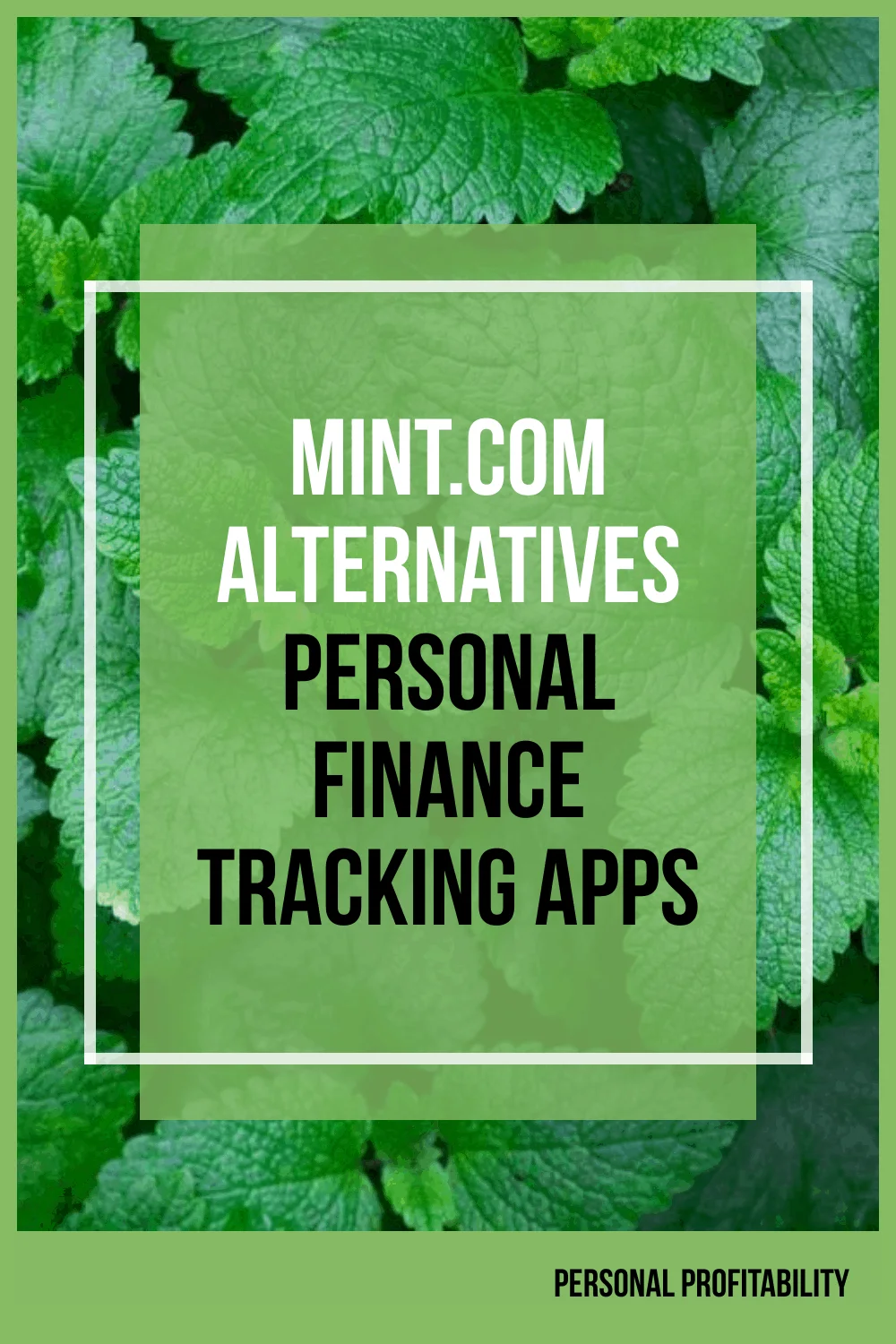

Thanks Eric. I’ll need to take a look at some of these. I’ve tried a few, but always end up back to my excel spreadsheet.
While it was a great option in the past, I would never use Excel for personal budgeting today. When there are such more automated and time efficient tools available, there is no need to use so much time to type things into the spreadsheet.
Great list! I’ve been looking for a free alternative to mint, but hadn’t really been having any luck. I’ll have to check these out!
There are lots of great options. The trick is finding the one that is best for your needs.
I just found your site and am going through your reviews. I found you when I started looking for MINT alternatives. My primary checking and savings accounts cannot connect to MINT (or vice versa). You have pointed out how that could affect ones view of the tool.
I look forward to continuing to read your comparisons.
Alan
Glad you found this helpful Alan. I’ve run into the same issue with a few accounts before on Mint. It is a great service, but definitely does not work for everyone. If I can answer any questions for you, be sure to let me know.
Moneyspire is very good personal finance software and a great Quicken and Mint alternative. Their website is http://www.moneyspire.com
Thanks for the suggestion George! This is one I’ve looked into in the past, but find the cost to be a little steep when there are so many free apps out there. Have you used Money Spire yourself? What is the experience like for you?
I’ve heard of YNAB being quite good, nice touch including it. For me, I’ve been using WalletHub for quite a while, and I gotta say, it’s much more sleek, no more headaches, and great guides. I think it’s a great alternative to Mint, and many many more, blows karma outta the water.
Great suggestion Charlotte!